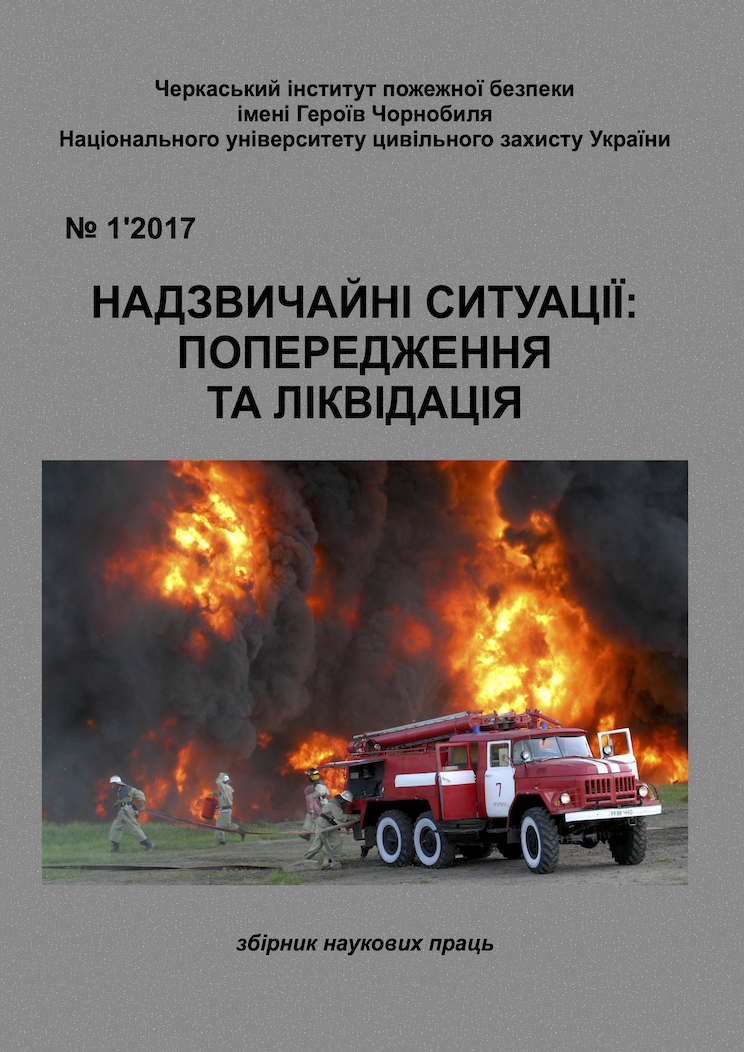ANALYSIS OF BUILDINGS PROTECTION FROM THE IMPACT OF INTERNAL EXPLOSION OF THE GAS- DUST- AIR MIXTURE
Abstract
The issue of industrial buildings and structures protection from an internal explosion of a gas, dust and air mixture is analyzed. The analysis of the ability of using polymeric materials as a transparent coating of lightweighted structures is carried out. The estimation of its economic efficiency and application expediency of polycarbonate lightweighted structures in industrial and warehouse premises for reduction of the excessive pressure formed at emergency deflagration combustion is made. Explosions are the most dangerous causing of huge damage to production buildings. The explosion is the rapid uncontrolled combustion of gas, steam, dust and air mixtures with the formation of compressed gases. As Statistics shows that such phenomenon as an explosion occurs quite often, for example, annually in the states of the European Union, there are about 2,000 explosions. The statistical report of the insurance company Industrial Risk Insurers shows that the explosions account for 67% of all incidents, and the damage is above 85% from the total damage. Despite the fitting of production buildings of the most modern explosion protection means up, the explosions prevention isn’t always possible. As a result, to protect people and property from the hazards of the explosion, a set of anti-explosion protection measures should be provided, the main one of which is the installation of lightweight structures. The opened lightweight structures provide a reduction in the excess arises pressure in the room during an explosion to a safe standardized value, therefore, the load on the basic structures is reduced in comparison with the load that would have occurred during the explosion of the same mixture in a closed space. Nowadays the using of glazing in a building as lightweight structures is one of the most effective design solutions for reducing the explosion of excess pressure in a room. With the development of architectural activities of buildings construction, the using of the glazing of the exterior walls areas as lightweight structures there aren’t fully sufficient to reduce the excess pressure of the explosion. Existing technical normative legal acts allow using other constructions as lightweight structures the effectiveness of which is confirmed by experimental studies and calculation methods. Therefore, an alternative to the standard and customary glazing may be polymers, namely cellular and monolithic polycarbonate. The main advantage of polycarbonate is the ratio of its weight and strength characteristics. Analyzing the strength characteristics, we can say that the cellular and monolithic polycarbonate is lighter than glass in 15 (2) times, but it isn’t inferior to glass in strength, moreover it exceeds by some parameters (impact strength is 200 (16000) times more than Glass). The lightness of the polycarbonate greatly simplifies the work of installation and construction. Polycarbonate is one of the lighttransmitting plastics, which can be called fireproof. Polycarbonate burns only into open flame and is self-extinguishing, doesn’t promote the spread of combustion. All this characteristics make polycarbonate more sought-after and acceptable to use as lightweight structures in buildings.


